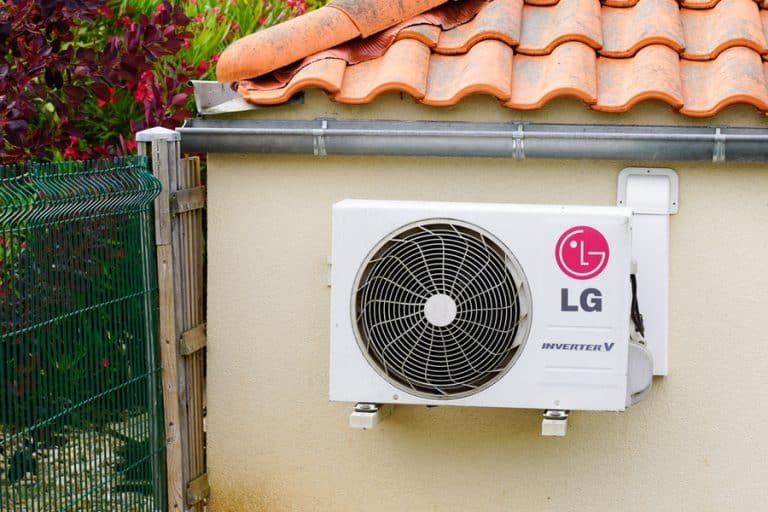
With LG air conditioners, error codes play a crucial role in identifying what might be going awry inside those sleek machines. The F1 error code, in particular, indicates a problem with the indoor unit’s fan motor. This isn’t just a minor glitch – it’s like when a car’s engine light comes on, suggesting you might want to check under the hood soon. Let’s walk through when you should consider dialing up a technician and how to make sense of what the F1 code means for your cooling companion.
Understanding the F1 Error Code in LG Air Conditioners
So, what really causes an F1 error code in your LG air conditioner? The F1 code generally points to a fan motor malfunction in the unit. Think of the fan motor as the air conditioner’s heart; it pumps the essential cool air throughout your space. When this component isn’t working correctly, your air conditioner can’t perform its primary function—keeping you cool.
There are several reasons why the fan motor might fail. Perhaps it’s due to a buildup of dust or debris, which is like a person trying to sprint with blocked nasal passages—it just doesn’t work well. Alternatively, the motor itself might be worn out, similar to how a tire loses tread over time. Understanding these underlying causes provides a clearer picture of why an F1 error surfaces and why it’s essential to address it promptly.
Here’s the deal: Ignoring an F1 error doesn’t make it disappear. Instead, it can lead to reduced efficiency and potentially higher energy bills as the unit struggles to function correctly. Moreover, ignoring the error for too long can lead to more severe damage, further increasing repair costs. With this in mind, knowing when to step in or call a professional can save both time and money.
When to Call a Technician
Now, you might be wondering if this is something you can tackle yourself or if it’s time to pick up the phone. Here’s a simple way to decide: if you’ve already tried basic troubleshooting like cleaning or resetting the unit, and the F1 error persists, it’s a sign that professional help is needed. Much like when DIY car repairs don’t solve the check engine light, sometimes expert intervention is the best course of action.
A certified technician has the expertise and tools to identify and fix internal issues safely and efficiently. They can thoroughly inspect the fan motor and related components, which is something most of us can’t do safely without the right know-how or equipment. Plus, calling a technician ensures that any warranty on your air conditioner stays intact, as some DIY repairs might void it.
Before your technician arrives, try noting any patterns. For example, does the error appear at particular times of the day, or after specific settings? Having this information ready can expedite the repair process. Once the technician has performed the necessary repairs, you should notice a significant improvement in your unit’s performance.
Potential Alternatives and Solutions
So, what if calling a technician isn’t immediately feasible? There are a few temporary measures you can take. First, ensure that the air filter is clean and unobstructed; a clogged filter can exacerbate issues with airflow. Secondly, ensure that vents are open and not blocked by furniture or curtains. These may seem like minor adjustments, but they can sometimes further compound existing problems if neglected.
Another potential solution—for those who are somewhat tech-savvy—is to consult the user manual or LG’s customer support. They can provide guidance on specific reset processes or diagnostic checks that you may perform without opening the unit. It’s akin to calling a health hotline when you’re unsure if you need to see a doctor right away.
Remember, these measures are only temporary fixes. If the error persists, or if the air conditioner’s performance doesn’t improve, the best course of action is still to consult with a technician. They have the expertise to diagnose and repair the root cause effectively.
Preventive Tips to Avoid Future Errors
Now that you’re familiar with the ins and outs of the F1 error code, let’s talk prevention. Keeping your air conditioner in top shape can help avoid future errors and extend its lifespan. Regular maintenance is key. Think of it like routine check-ups for your car or health. Just as those keep your vehicle running smoothly and your body healthy, regular air conditioner maintenance can prevent problems before they arise.
Schedule periodic professional inspections, ideally before and after peak seasons. This can help catch minor issues before they evolve into major problems, like the F1 error. Additionally, keeping the unit clean, replacing or cleaning filters regularly, and ensuring proper airflow can go a long way toward maintaining efficiency.
Staying informed about your air conditioner’s health is crucial. By understanding error codes and knowing when to seek help, you’re better equipped to ensure that your cooling system continues to serve you well through those hot, sticky days. After all, a little proactive care can save you a lot of time, money, and sweat in the long run.